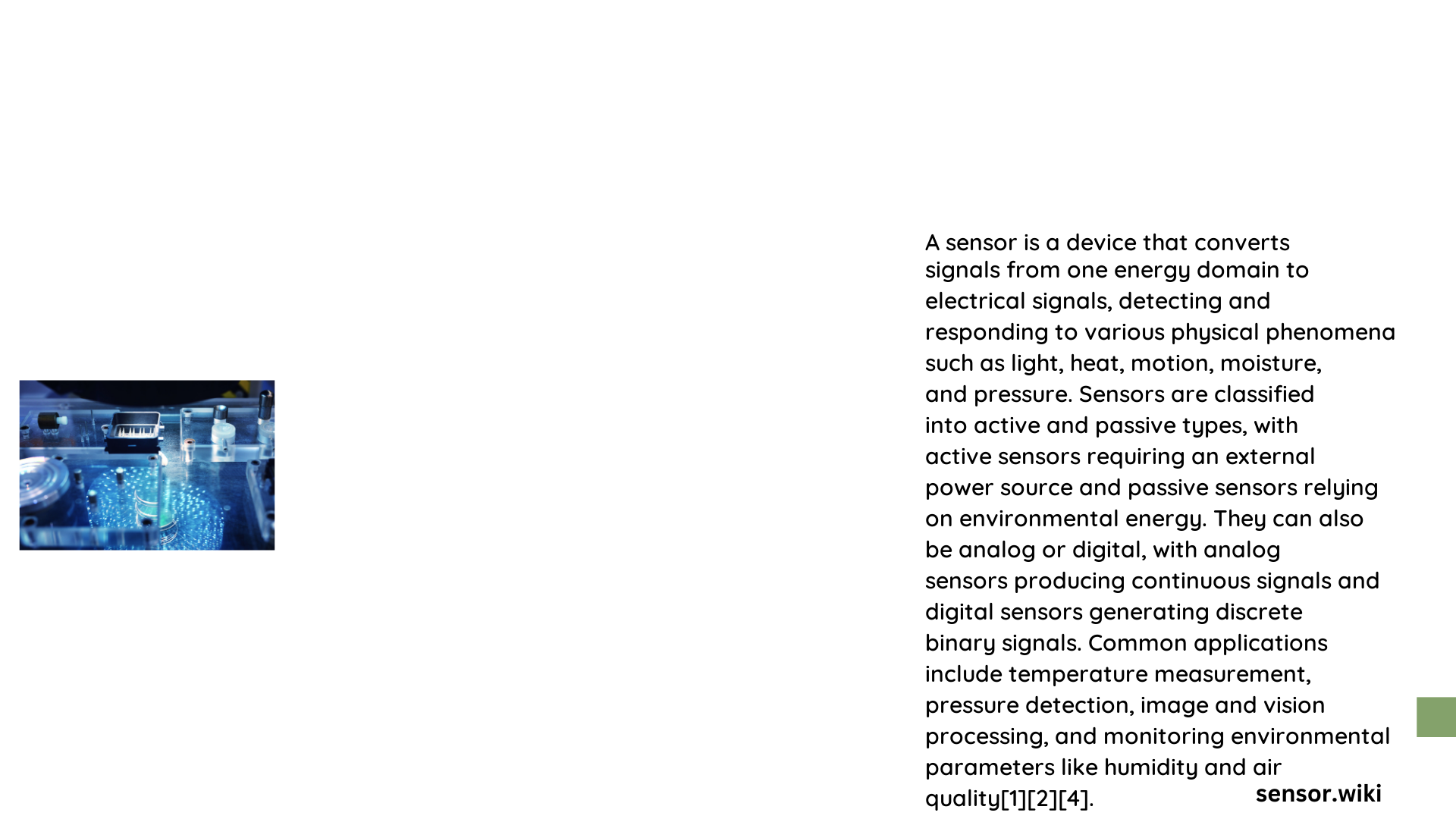Sensors are sophisticated electronic devices that detect and convert physical phenomena into measurable electrical signals, serving as critical components in modern technology. These intelligent instruments bridge the gap between physical environments and electronic systems, enabling precise measurement, monitoring, and control across diverse domains from healthcare and automotive to industrial automation and consumer electronics.
What Are Sensors and How Do They Work?
Sensors represent sophisticated transducers that transform various physical or environmental characteristics into electrical signals. Their fundamental operational principle involves detecting changes in specific parameters and converting these changes into quantifiable electrical outputs.
Core Sensor Characteristics
| Characteristic | Description | Significance |
|---|---|---|
| Sensitivity | Ability to detect minute changes | Determines precision |
| Range | Operational measurement boundaries | Defines application scope |
| Resolution | Smallest detectable signal change | Indicates measurement accuracy |
| Response Time | Speed of signal generation | Critical for real-time applications |
What Makes Sensors Essential in Modern Technology?

Sensors play a transformative role across multiple technological domains by:
- Enabling real-time data collection
- Facilitating automated decision-making processes
- Enhancing system efficiency and performance
- Providing critical monitoring and diagnostic capabilities
Key Sensor Classification
- Physical Parameter Sensors
- Temperature sensors
- Pressure sensors
- Motion sensors
-
Proximity sensors
-
Environmental Sensors
- Humidity sensors
- Light sensors
- Gas sensors
- Radiation sensors
How Do Different Sensor Technologies Operate?
Operational Principles
Sensors utilize various technological mechanisms to convert physical phenomena:
- Resistive Methods: Changes in electrical resistance
- Capacitive Methods: Variations in electrical capacitance
- Piezoelectric Methods: Generation of electrical charge through mechanical stress
- Optical Methods: Light-based signal detection and conversion
What Are Advanced Sensor Technologies?
Emerging Sensor Innovations
- MEMS (Micro-Electro-Mechanical Systems)
- Microscopic sensors with high precision
- Low power consumption
-
Versatile applications in multiple industries
-
AI-Integrated Sensors
- Machine learning capabilities
- Predictive analysis
- Enhanced decision-making potential
What Challenges Exist in Sensor Development?
Technical Constraints
- Manufacturing complexity
- Cost considerations
- Calibration requirements
- Environmental limitations
What Future Trends Define Sensor Technology?
Anticipated Developments
- Miniaturization of sensor components
- Enhanced artificial intelligence integration
- Improved energy efficiency
- Expanded application domains
Practical Applications Across Industries
Sector-Specific Sensor Utilization
- Healthcare: Patient monitoring, diagnostic equipment
- Automotive: Safety systems, performance optimization
- Manufacturing: Quality control, process automation
- Consumer Electronics: User interaction, device functionality
Conclusion
Sensors represent a critical technological frontier, continuously evolving to provide more sophisticated, precise, and intelligent solutions across diverse domains. Their ability to translate physical phenomena into actionable data makes them indispensable in our increasingly digital and automated world.
